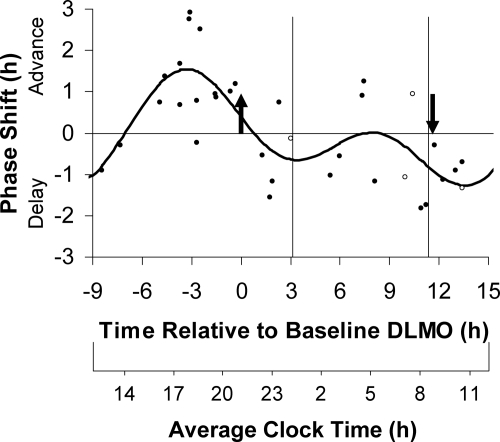Figure 2.
The three-pulse PRC to 0.5 mg of exogenous oral melatonin generated from subjects free-running during 3 d of an ultradian light/dark cycle (LD 2.5:1.5). Phase shifts of the circadian clock, measured by changes in the timing of the DLMO, are plotted against the time of administration of the melatonin pill relative to the baseline DLMO (top x-axis). The average baseline DLMO is represented by the upward arrow, the average baseline DLMOff by the downward arrow, and the average assigned baseline sleep times at home from before the laboratory sessions are enclosed by the vertical lines. Each dot represents the phase shift of an individual subject, calculated by subtracting the phase shift during the placebo session (free-run) from the phase shift during the melatonin session. The open circles represent the four women who had varying hormone levels during the study due to the use of hormonal birth control. The curved line illustrates the dual harmonic curve fit. The average clock time axis (bottom x-axis) corresponds to the average baseline sleep times at home.

